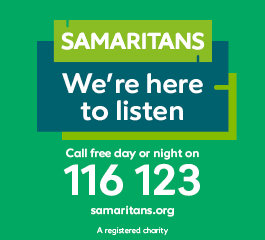Meeting children's mental health needs
11 December 2017Making mental health education compulsory for school children is being debated in parliament today. What form this education should takes should be shaped by children, Paul Burstow argues.
As many as one in seven children have a diagnosable mental health disorder. Yet for too many, getting the right help at the right time and in the right place, seems more challenging than landing men on the moon!
What do children and young people say they want? How do we ensure that looked after children are not further traumatised by the ‘care’ they receive?
Over the past year and a half an expert working group, set up by Ministers, has been looking at the evidence and listening to the lived experience of children and young people. Its report offers a practical agenda for action.
The Social Care Institute for Excellence (SCIE) was commissioned to support the work of the Group and in particular bring its exSpertise in co-production to the task. Over 80 children and young people contributed to the project including four care leavers sitting on the expert group.
Using film, photography, art and talking, SCIE worked with children and young people of all abilities and backgrounds to create ways for them to tell their stories and share their ideas. And because telling those stories can unlock memories and emotions, SCIE put in place pastoral support and a helpline too.
Why did we do all of this? Simple. The best design of any service has to be informed and shaped by those it is for.
This simple proposition, that co-production delivers better results, informs the work of SCIE and underpins the recommendations of the expert working group.
I strongly believe that children and young people (CYP) must be involved in co-designing the support they need and that shared decision-making should be the norm. That was the goal I set as the Minister responsible for launching CYP IAPT (improving access to psychological therapies). As a result, young people were involved at every stage including interviewing each wave of Child and Adolescent Mental Health Services (CAMHS) who joined the programme.
Our goal must be to ensure that all children have the right resources and support they need to flourish. This is especially the case for looked after children. Understanding their lived experience and maintaining regular dialogue is critical.
As part of its inquiry the expert working group asked 35 children and young people for their recommendations. They are set out boldly in the report on page 30. There are eleven asks or calls to action that should leave all who read the report chastened that the basics of how professionals interact with them needs to be restated.
Throughout the course of the inquiry young people expressed their anger and frustration that professionals made assumptions about their capacity to be involved in decision-making. Many felt they were not kept in the loop about decisions made about them without them.
This frustration was echoed in the findings of the recent CQC review of children and young people’s mental health services. The report warned that some children and young people “fall through the gaps” because they are unable to access services.
As the Expert Group acknowledge in their report, ‘Statutory services are becoming much better at consulting children and young people’, but they warn, “If young people are not involved effectively from the start, they will disengage”.
The expert group makes sixteen recommendations. Above all they argue for a new way of working to ensure that the whole system is working collaboratively to provide the support and recognition that looked after children and their caregivers need. Accountability needs to be strengthened and the needs of looked after children made more visible.
Drawing on lessons from the success of virtual school heads, the expert group are calling for a similar oversight role to be established. The goal? Clear accountability to ensure that every child and young person gets the help and support they need for their mental and emotional healing and wellbeing.
Mental distress and trauma in childhood is a strong predictor or mental illness in adulthood. Over half of life long mental ill-health has its first signs in the teen years. Making sure that those in the state’s – our collective – care get the right help at the right time is the least we should do.


Comments
Write a Comment
Comment Submitted